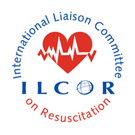As these 10 steps to improve IHCA are a framework to guide local implementation tailored to the specific needs of each hospital, ILCOR likes to provide examples of success or learned lessons from all kinds of settings. This initiative aims to reduce barriers to implementation getting examples from the experience of experts and local resuscitation champions, looks at sustainability with mutual respect to enhance collaboration and networking, which opens the door for partnerships on projects that might lead to improvement in collaboration with hospitals in all settings and countries.
Please submit your experience for any of the steps via the contact e-mail (ilcor@heart.org) and use the template provided.
ILCOR 10 Steps IHCA Case Studies Template
The 10 Steps to Improve In-hospital Cardiac Arrest Outcomes and Quality of Care:
Plan and Prepare
1. Build and support governance and infrastructure for a resuscitation program.
Coming soon.
2. Collect data to measure and improve resuscitation processes and outcomes.
“The IHCA registry in a Chinese Hospital”
3. Implement effective education and training for resuscitation.
“A Case Study of a low-dose, high-frequency training strategy from Denmark”
"Improving CPR Quality with Feedback Devices - A Case Study from Australia"
Prevent
4. Establish patient and family goals of treatment early and reassess often.
5. Stop preventable in-hospital cardiac arrest.
“A Case Study of Stopping Preventable IHCA in the Intensive Care Unit Setting from the USA”.
Perform
6. Develop and deploy an effective resuscitation response system.
7. Deliver guideline-based resuscitation care.
8. Deliver guideline-based post-cardiac arrest care.
Coming soon
Principles and Culture
9. Implement a person-centered culture of excellence in care.
10. Ensure the well-being of health care professionals.
Coming soon
